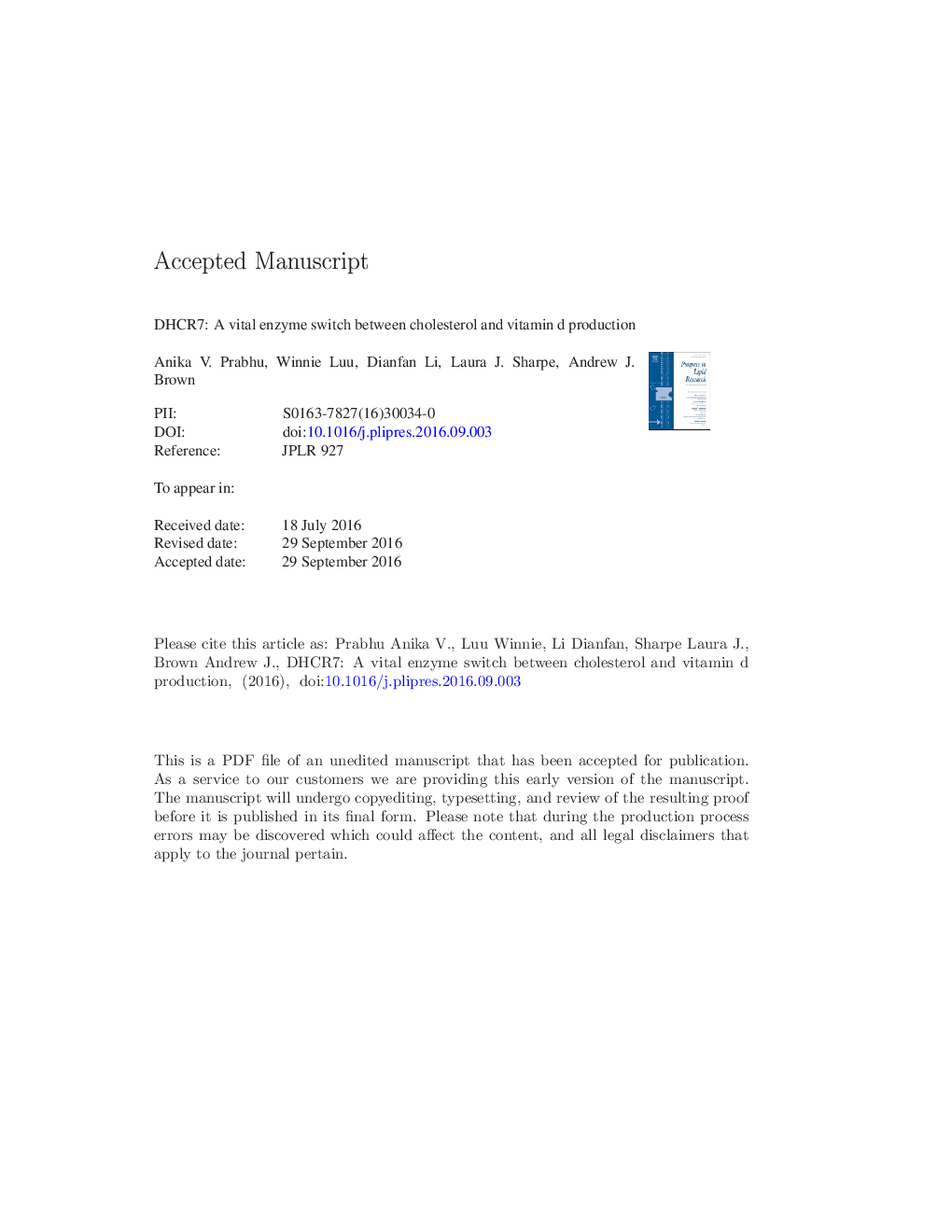| Article ID | Journal | Published Year | Pages | File Type |
|---|---|---|---|---|
| 8358867 | Progress in Lipid Research | 2016 | 46 Pages |
Abstract
The conversion of 7-dehydrocholesterol to cholesterol, the final step of cholesterol synthesis in the Kandutsch-Russell pathway, is catalyzed by the enzyme 7-dehydrocholesterol reductase (DHCR7). Homozygous or compound heterozygous mutations in DHCR7 lead to the developmental disease Smith-Lemli-Opitz syndrome, which can also result in fetal mortality, highlighting the importance of this enzyme in human development and survival. Besides serving as a substrate for DHCR7, 7-dehydrocholesterol is also a precursor of vitamin D via the action of ultraviolet light on the skin. Thus, DHCR7 exerts complex biological effects, involved in both cholesterol and vitamin D production. Indeed, we argue that DHCR7 can act as a switch between cholesterol and vitamin D synthesis. This review summarizes current knowledge about the critical enzyme DHCR7, highlighting recent findings regarding its structure, transcriptional and post-transcriptional regulation, and its links to vitamin D synthesis. Greater understanding about DHCR7 function, regulation and its place within cellular metabolism will provide important insights into its biological roles.
Keywords
AEBSDHCR77-dehydrocholesterol reductase7-DehydrocholesterolDHCR24EBPSRESREBP-2HMGCRLBRNADPHUVB7DHCSSDSLOS24-dehydrocholesterol reductase3-hydroxy-3-methylglutaryl-CoA reductaseultraviolet BHedgehogsterol-sensing domaintransmembrane domainantiestrogen binding siteSmith-Lemli-Opitz Syndromenicotinamide adenine dinucleotide phosphateVitamin D3Single nucleotide polymorphismSNPcholesterolLamin B receptor
Related Topics
Life Sciences
Agricultural and Biological Sciences
Food Science
Authors
Anika V. Prabhu, Winnie Luu, Dianfan Li, Laura J. Sharpe, Andrew J. Brown,
